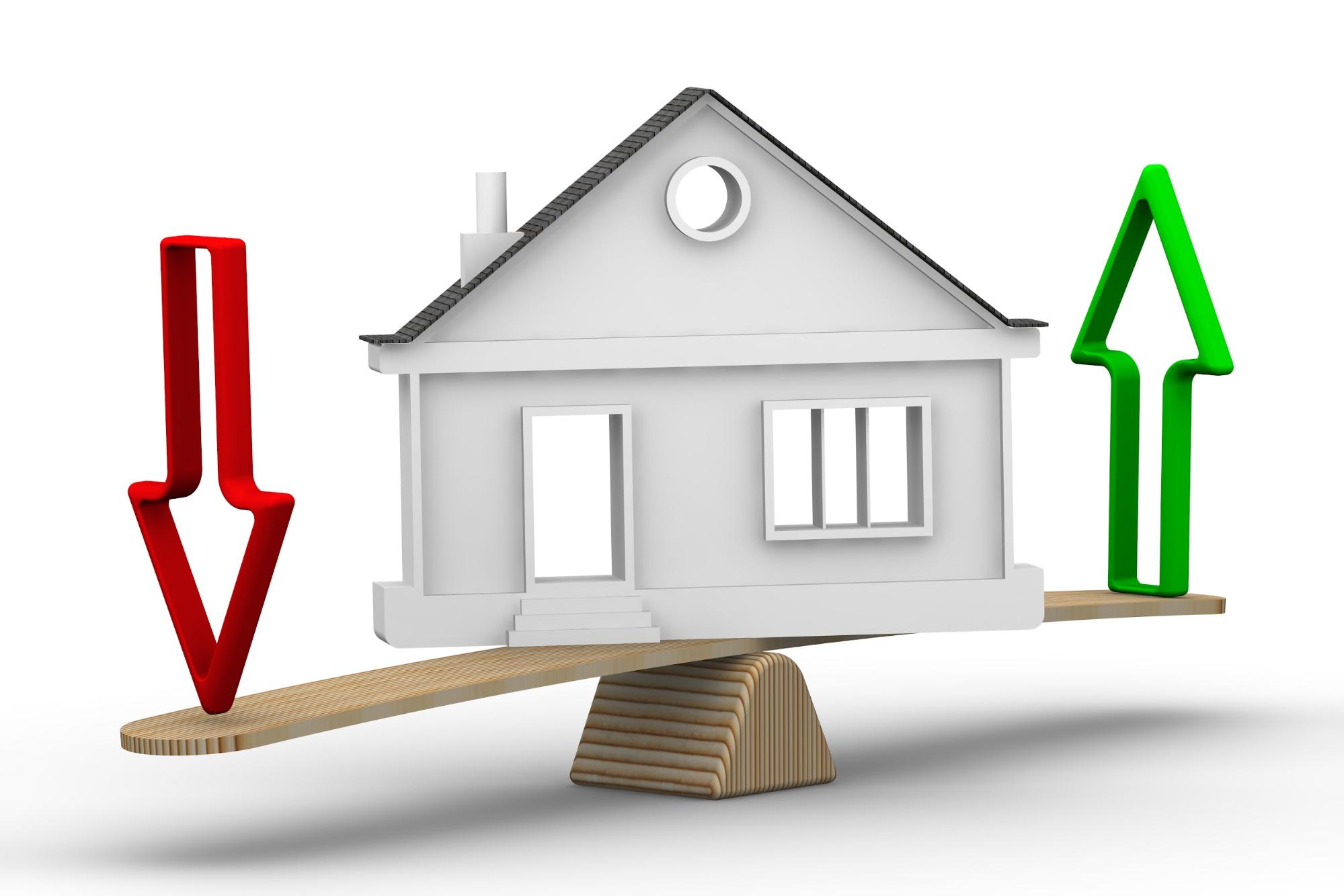Features > Property News & Insights > Market updates
Identifying Australia’s Housing Cycles: Peaks and Troughs

Australians have long held an obsession with property, as a means to provide stability and generate wealth. And many have reaped the benefits of the lucrative Australian housing market, with mum and dad investors becoming self-made millionaires.
But as with all things in life, Australian property has seen its peaks and troughs. Despite this, one thing is certain - the trajectory of house prices over the decades has been up, up, and up.
In the 30 years to December 2021, house prices have increased a whopping 414.6 per cent, according to CoreLogic and Aussie Brokers. In December of 1991, the median dwelling value was just $114,034. Now, in 2023, the median dwelling value has risen to $740,668.
And while interest rate rises were widely expected to take the heat out of the market, house prices have held their ground despite the new challenges.
Interest rates are undoubtedly doing their job to decrease affordability and stretch the household budget, but other factors seem to be floating prices in their steadfast state.
The housing market has defied all expectations yet again, proving to be exceptionally robust, even in the midst of the most aggressive rate hiking cycle in a generation.
It’s taken some experts by surprise, despite it being written in history - that interest rates have a minimal effect on house values in the longer term.
Both peaks and troughs have occurred simultaneously to rising interest rates, proving that rising house prices and rising interest rates are not mutually exclusive to each other.
Through peaks and troughs, interest rates have fluctuated, but the fact remains - people need housing, and land is a limited resource.

The history: Peaks
Over the 30 years to December 2021, there were seven periods of sustained increase in national home values and seven periods of decline.
According to The Aussie Brokers Report, there were also distinct differences between these opposing periods.
Periods of growth lasted an average of 41 months, accumulating an average growth of 34 per cent. On the other hand, value declines lasted an average of only 12 months, with an average value decrease of -4.3 per cent.
Historically, growth periods have been more prominent, resulting in strong growth over the longer term.
Now, with monetary policy largely failing at keeping a lid on housing prices, it raises the question - what factors play the largest role in house price movements?
The graph below, from LiveWire markets, shows house prices in Sydney and Melbourne doubling seven times in 60 years, parallel to rising and falling interest rates.

As evident in the data, rate rises had very little effect on house prices.
There were some other notable events, however, specifically ones that correlate to credit availability, as evident in the graph from Matusik, below.
The mining and finance boom that occurred in the 1970s had house prices experiencing a sharp increase, and then a brief reprieve shortly after.
Another credit boom happened in the late 1980s, in 2006, and then again in 2016. All of these events were characterised by sharp increases in home values, followed by shallow dips in the market - yet not enough to erase any significant gains.

The troughs
As mentioned above, Australian property has experienced seven troughs over the past 30 years, all of which have been shallow, and short-lived.
While it’s evident that the troughs in Australia’s property history have merely put a brake on rapid growth, it’s useful to understand what has driven them.
The latest troughs in the market occurred during the Global Financial Crisis, the onset of COVID-19, and most recently, the initial hiking phase of the cash rate.
In earlier decades, the 1970, 1980, and 1990 recessions all had adverse implications for property prices.
But dips were shallow, and followed by strong recovery periods.
Regardless of the economic climate, since 1991, Australian house prices have never dipped for more than two consecutive years, on an annual basis.

Brad Cramb, CEO of Distribution at Lendi Group, said that focusing on the bigger picture is most important for aspiring homeowners.
“With potential interest rate rises on the horizon and ongoing debate around where the housing market is headed, this can be a stressful time for aspiring homebuyers but what is clear from the analysis is that property is a long game,” said Mr Cramb.
"Trying to pick what the market will do in the short-term can be distracting for homebuyers and we know that the market has defied expectations so far since the beginning of the pandemic.”
“The last thirty years have shown us that property prices will invariably go up over time, and so we encourage Australians not to get caught up in this short-term thinking.”
With decades of property data revealing an undeniable trend of long-term growth, perhaps the old adage that ‘time in the market beats timing the market’ is true. Those who bought their homes for $114,034 in 1991 would certainly think so.
Stay Up to Date
with the Latest Australian Property News, Insights & Education.




.png?width=292&height=292&name=Copy%20Link%20(1).png)
 SIGN UP FOR FREE NEWSLETTER
SIGN UP FOR FREE NEWSLETTER





.jpg?width=1920&height=1080&name=Warning%2c%20You%20Might%20Be%20Facing%20Higher%20Taxes%20Soon%20(1).jpg)





.png?width=1920&height=1080&name=Rate%20Drops%20Signal%20BIGGEST%20Property%20Boom%20in%20DECADES%20(1).png)

.jpg?width=1920&height=1080&name=Labor%20vs%20Liberal%20These%20Housing%20Policies%20Could%20Change%20the%20Property%20Market%20Forever%20(1).jpg)
.jpg?width=1920&height=1080&name=QLD%20Slashes%20Stamp%20Duty%20Big%20News%20for%20Investors%20%26%20Home%20Buyers%20(1).jpg)
.jpg?width=1920&height=1080&name=Trump%20Just%20Slapped%20Tariffs%20%E2%80%93%20Here%E2%80%99s%20What%20It%20Means%20for%20Australia%20(1).jpg)
.jpg?width=1920&height=1080&name=Federal%20Budget%202025%20More%20Debt%2c%20No%20Housing%20%E2%80%93%20Here%E2%80%99s%20What%20You%20Need%20to%20Know%20(1).jpg)
.jpg?width=1920&height=1080&name=Australias%20Housing%20Crisis%20is%20about%20to%20get%20MUCH%20Worse%20(New%20Data%20Warns).jpg)
%20(1).jpg?width=1920&height=1080&name=Australias%20RENTAL%20CRISIS%20Hits%20ROCK%20BOTTOM!%20(2025%20Update)%20(1).jpg)
%20(1).png?width=1920&height=1080&name=Is%20Adelaide%20Still%20a%20Good%20Property%20Investment%20(2025%20UPDATE)%20(1).png)
.jpg?width=1920&height=1080&name=RBA%20Shocks%20with%20Rate%20Cuts!%20What%E2%80%99s%20Next%20for%20Property%20Investors%20(1).jpg)
%20(1).jpg?width=1920&height=1080&name=I%20Predict%20The%20Feb%20Rate%20Cut%20(My%20Price%20Growth%20Prediction)%20(1).jpg)
.png?width=1920&height=1080&name=Why%20Property%20Prices%20Will%20Rise%20in%202025%20Market%20Predictions%20(1).png)
.jpg?width=1920&height=1080&name=Why%20Investors%20Are%20Choosing%20Apartments%20Over%20Houses%202%20(1).jpg)
.jpg?width=1920&height=1080&name=Why%20Rate%20Cuts%20Will%20Trigger%20A%20Property%20Boom%20(1).jpg)
.jpg?width=1920&height=1080&name=Retire%20On%202Million%20With%20One%20Property%20(Using%20SMSF).jpg)
.jpg?width=1920&height=1080&name=4%20Reasons%20Why%20You%20Should%20Invest%20in%20Melbourne%20Now%20(1).jpg)
%20(1).jpg?width=1920&height=1080&name=Old%20Property%20vs%20New%20Property%20(Facts%20and%20Figures%20Revealed)%20(1).jpg)
%20(1).jpg?width=1920&height=1080&name=Will%20The%20New%20QLD%20Govt%20Create%20a%20Property%20Boom%20or%20Bust%20(My%20Prediction)%20(1).jpg)
%20Scott%20Kuru%20(1).jpg?width=1920&height=1080&name=Inflation%20Hits%20Three-Year%20Low%20(Will%20RBA%20Cut%20Rates%20Soon)%20Scott%20Kuru%20(1).jpg)
.jpg?width=1920&height=1080&name=How%20to%20Buy%20Investment%20Property%20Through%20SMSF_%20The%20Ultimate%20Guide%20(1).jpg)
.jpg?width=1920&height=1080&name=Victoria%20Slashes%20Stamp%20Duty%20Melbourne%20Set%20to%20Boom%20Scott%20Kuru%20(1).jpg)
.png?width=1571&height=861&name=Are%20Foreign%20Buyers%20Really%20Driving%20Up%20Australian%20Property%20Prices%20(1).png)
.jpg?width=1920&height=1080&name=The%20Single%20Factor%20That%20Predicts%20Property%20Growth%20Regions%20(1).jpg)
%20Scott%20Kuru%20(1).jpg?width=1920&height=1080&name=My%20Prediction%20On%20Rates%20%26%20Negative%20Gearing%20(Market%20Crash)%20Scott%20Kuru%20(1).jpg)

-1.png?width=1920&height=1080&name=Major%20Banks%20Cut%20Rates%20Will%20RBA%20Follow%20Suit%20(Sept%20Rate%20Update)-1.png)
%20Scott%20Kuru-1.png?width=1920&height=1080&name=Rate%20Cut%20Coming%20What%20New%20Zealands%20Move%20Means%20for%20Australia%20(Sept%20Prediction)%20Scott%20Kuru-1.png)
%20(1).jpg?width=1920&height=1080&name=Buy%20when%20the%20interest%20rates%20are%20high!%20(Why%20you%20must%20buy%20now!)%20(1).jpg)
.jpg?width=1920&height=1080&name=Carms_Revised%20Taxes%20Due%20Aug%209%20YT%20Thumbnail02%20(1).jpg)
.jpg?width=1920&height=1080&name=Carms_Too%20Little%20Too%20Late%20Aug%207%20YT%20Thumbnail01%20(1).jpg)









.jpg?width=1920&height=1080&name=Carms_Rate%20Drop%20In%20July%20Jun%2010%20YT%20Thumbnail02%20(1).jpg)
.jpg?width=1920&height=1080&name=Carms_Own%20a%20Property%20V6%20Jun%205_YT%20Thumbnail%20(1).jpg)









.png?width=1920&height=1080&name=Artboard%201%20(3).png)






.jpg?width=1920&height=1080&name=YT%20thumbnail%20%20(1).jpg)

